
DiscSeel Minimally Invasive Low Back Neck Thoracic Regenerative Pain Treatment NJ NY
The Discseel® Procedure
Why would you travel to see a regenetive medicine specialist?
To get your treatment done right by a board certified MD.
What are your health and a functional, active life worth to you?
A small commitment of your time and a quick trip could make the difference to you experiencing a higher quality of life.
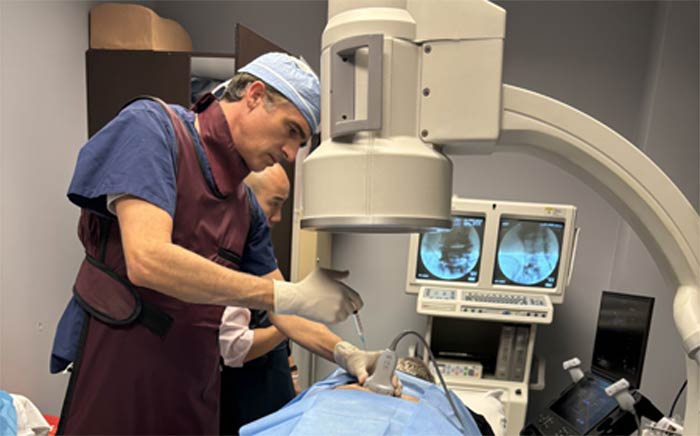
What is The Discseel® Procedure?
Discseel® is a revolutionary minimally-invasive treatment for low back pain. The treatment consists of performing an annulogram under live X-ray guidance to look for tears in the spinal discs. If tears in the discs are found, they are sealed with an FDA-approved 100% natural biologic called fibrin. The Discseel® procedure is a true alternative to spinal fusion that can provide long-lasting relief from chronic back pain.
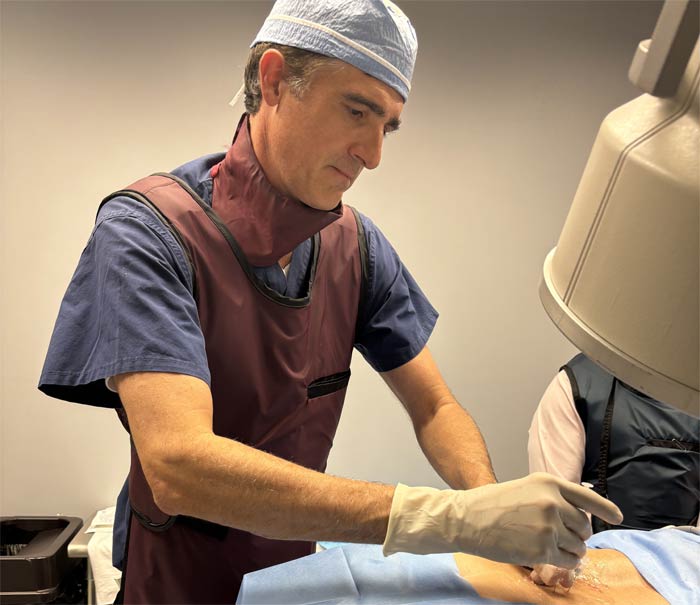
Why Discseel®?
Every surgeon knows patients with continued back pain after back surgery including spinal fusions. We now know that tears in discs are the cause of spinal pain in many patients. Torn discs can leak, and this leaking can cause inflammation, making nerves sensitive to even the smallest of mechanical forces.
Therefore, sealing leaky discs can stop the underlying cause of inflammation. We seal discs because it “Treats the cause, instead of the effect.”
All disc pain begins as small annular tears. Annular tears progress, leading to disc degeneration, bulges, herniations, dessication, and degenerative disc disease. All of these conditions are attributable to annular tears.
The Discseel® Procedure utilizes fibrin to repair discs, decrease pain, and allow increased activity. Studies show that fibrin strengthens discs almost immediately, something that stem cell treatments cannot do. The Discseel® Procedure can be performed in patients who have had previous spine surgeries including fusions.
The Discseel® Procedure vs. Spinal Fusion
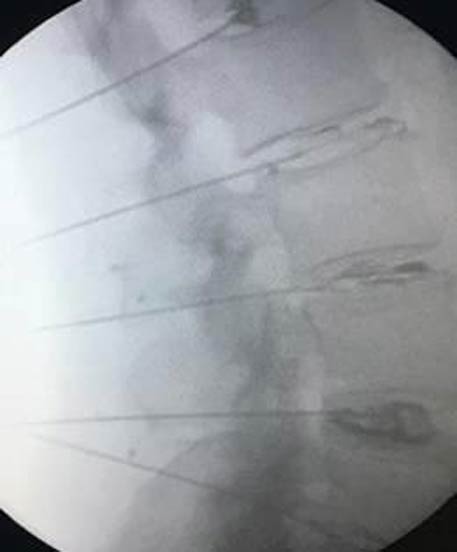
Spine treated with tiny needles for The Discseel® Procedure

Spine treated with screws and rods for lumbar fusion

Spinal fusion surgeries are life altering procedures indicated for serious conditions such as spinal instability or cancer. They unfortunately have a high failure rate when it comes to treating spinal pain. Spinal fusions often cause a “Domino Effect” where adjacent spinal levels are more prone to damage because of the lack of mobility in the segment of the spine that has been fused.
- Spinal fusion does not address the long-term source of pain in over 40% of patients
- Over 1/3 of spinal fusion patients need a second or third fusion within 10 years
- The Discseel® Procedure has been successful in relieving back pain in 70% of patients that had a previous failed spinal procedure such as fusion surgery
What are the steps involved in getting the Discseel® Procedure?
-
Get a Consultation
During your in-person consultation, the doctor will discuss your symtoms, medical and surgical history, and review your radiologic studies. He will answer your questions, including those that may not have been addressed by other physicians. When your pain interferes with your sleep or activities, it is time to seek help.
-
Have an Annulogram™ Performed
The Annulogram™ is a test that identifies subtle tears in the discs that MRIs and discograms cannot. This allows us to be proactive, addressing small tears before they progress to large tears or herniations. During this test, contrast dye is injected into the annulus of the discs in the region of pain under x-ray guidance.
-
Receive Treatment
The Discseel procedure takes less than an hour and you will be offered mild sedation. After the annulogram identifies tears in the discs, these tears are injected with fibrin which is an FDA approved biologic used in an off-label manner, similar to the use of steroids for epidural injections. Fibrin has a long history of safety in use in the spine. The fibrin will seal the disc tears and promote tissue growth over the following months, helping to heal the discs.
-
Up and Moving Within 24 Hours
Following the Discseel® Procedure, you will rest in the recovery area for about 30 minutes. Most people experience increased or different symptoms before improvement. We like you to walk with assistance initially, then increase your activities at 10% increments until you are at 100% of your desired activity level. Most patients experience relief after 3 to 6 months as discs heal slowly.
Kindly reach out to our friendly staff at RegeneSpine at 1-888-352-3038 to learn more or fill out the form at the top of this page to be contacted. Thank you!
Annular Tears Are the Underlying Cause of Most Disc Problems
Herniations, bulges, protusions, degenerative disc disease, even spine arthritis and bone spurs are all caused by annular tears. Surgery cannot heal tears and instead worsens them.
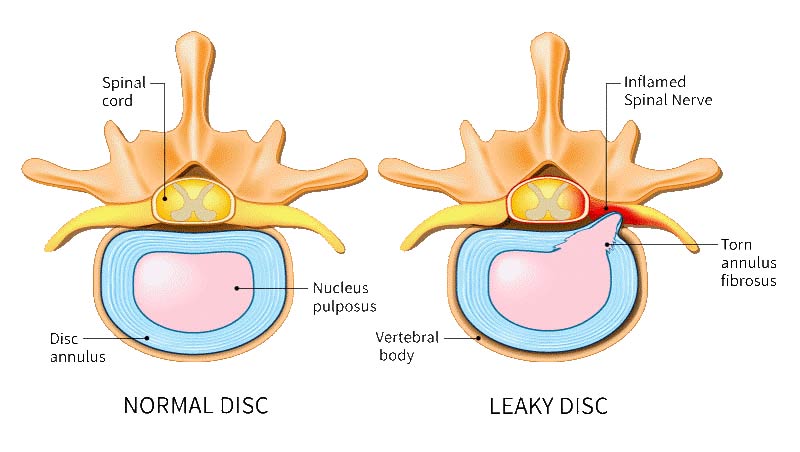
What Are Annular Tears?
As we get older, the vertebral discs can start to exhibit wear and cause some health problems. A common problem is tear in the annulus fibrosus, or annular fibers, commonly referred to as an annular tear or leaky disc. Those tears are the precise source of underlying disc and sciatica symptoms.
Conservative options, such as …
- Anti-Inflammatory Medications
- Pain Medications
- Steroid Injections
- Physical Therapy
- Low Impact Excercise
Are often prescribed to treat symptoms, but none have been shown to heal torn discs.
The Discseel® Procedure uses Fibrin, an FDA-approved substance that is used off-label in this procedure, to seal and regenerate tissue. Fibrin is injected into disc tears, typically taking less than an hour. You’ll be walking the same day. The disc continues healing over 3-12 months as you increase your activity.
The Minimally Invasive Discseel® Procedure Repairs Herniated Discs Without Surgery.
Herniated Discs Occur as a Result of Annular Tears Herniated discs do not cause symptoms; it is leaking liquid gel, known as the nucleus pulposus, that causes symptoms and weakness.
What is a Herniated Disc?

Herniated disc pain occurs when the gel-like inner portion of the spinal disc leaks out through tears in the annulus fibrosus alongside a herniated disc. This gel, which the body perceives as a foreign substance, caused inflammation and irritation of the disc as well as surrounding spinal roots. Pain related to a herniated disc is often not caused by a nerve being physically pinched.
Common treatments for herniated discs may include:
- Discectomy
- Spinal Fusion
- Chiropractic Manipulation
- Cortisone or Steroid Injections
- Medication
Unfortunately, these methods do not address the underlying cause of herniated disc pain. The Discseel® Procedure uses Fibrin, an FDA-approved substance that is used off-label in this procedure, to seal torn tissues in the disc. Fibrin is injected into disc tears, typically taking less than an hour. You’ll be walking the same day. The disc continues healing over 3-12 months as you increase your activity.
Degenerative Disc Disease
All adults have degenerative discs. Degenerative disc disease is simply the appearance of torn discs. It’s only the leaking of the nucleus pulposus as a result of a torn disc that causes pain. Surgery cannot heal these tears and instead worsens them.
What Is Degenerative Disc Disease?
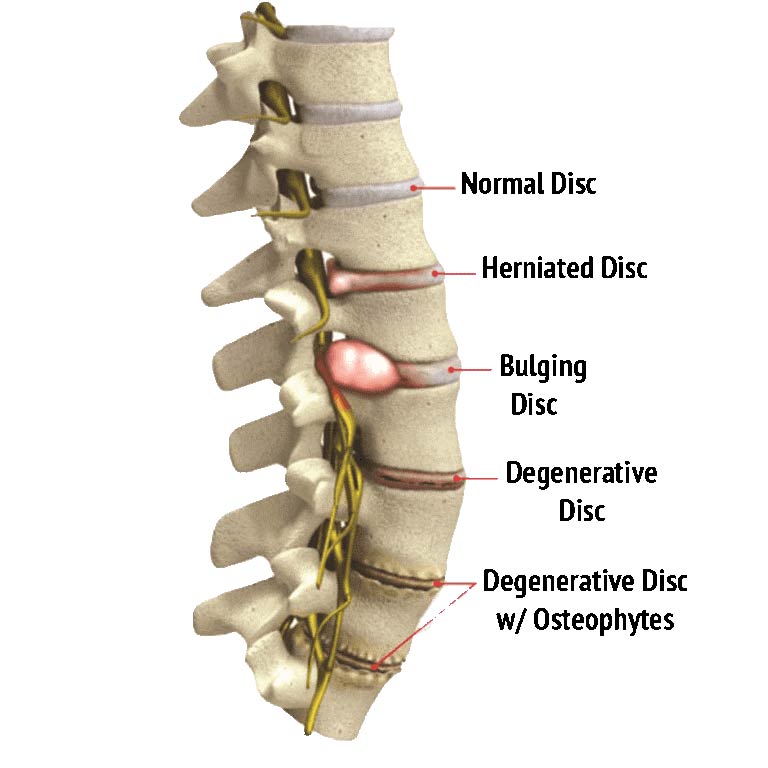
As we age, spinal discs obtain wear and tear that can lead to annular tears. These tears may cause disc desiccation (dehydration), leaving the spinal discs thin and unable to cushion the vertebrae. Degenerative disc disease can lead to other spine conditions as well, but annular tears are the underlying cause of degenerative disc disease and its symptoms.
Conservative options, such as:
- Medication
- Spinal Fusion
- Spinal Mobilization
- Artificial Disc Replacement
- Nerve Stimulation
Are often prescribed to treat symptoms of degenerative disc disease, but these options only focus on easing pain rather than treating the underlying cause. The Discseel® Procedure uses Fibrin, an FDA-approved substance that is used off-label, to seal and regenerate tissue. Fibrin is injected into disc tears, typically taking less than an hour. You’ll be walking the same day. The disc continues healing over 3-12 months as you increase your activity.

RegeneSpine’s Practice Specialties a Convenient Flight from Zimbabwe
- Regenerative medicine
- Stem cell treatments
- Interventional orthopedics
- PRP (Platelet Rich Plasma)
- Regenerative spine and joint procedures
- Pain management without the use of opioids
